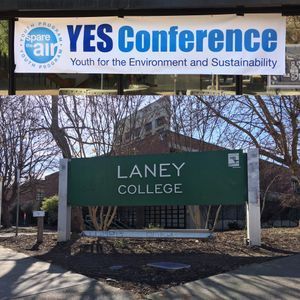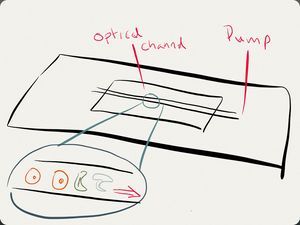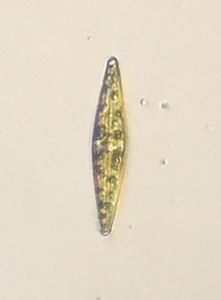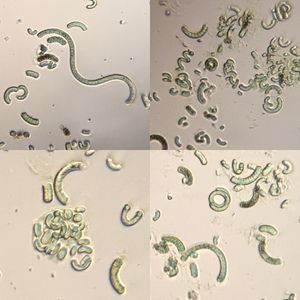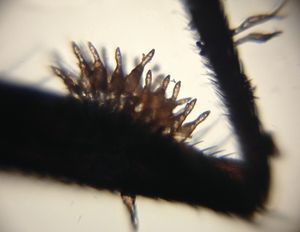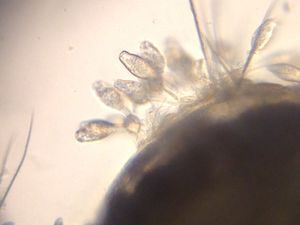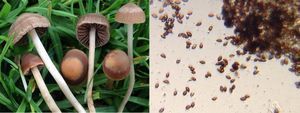Polychaete from Lake Merritt
 May 18, 2016 • 12:32 PM UTC
May 18, 2016 • 12:32 PM UTC Unknown Location
Unknown Location 140x Magnification
140x Magnification Microorganisms
Microorganisms
damontighe
I currently work as a Curriculum and Training Specialist at Bio-Rad laboratories and help teachers incorporate more biotechnology into their classroom. I worked in DNA sequencing for years including the Human Genome Project and single cell genomics (termite, cow, and other guts). I have a love of the outdoors that I spread to the public via Calnature.org. I enjoy backpacking, picking mushrooms and photography.
15posts
17comments
9locations
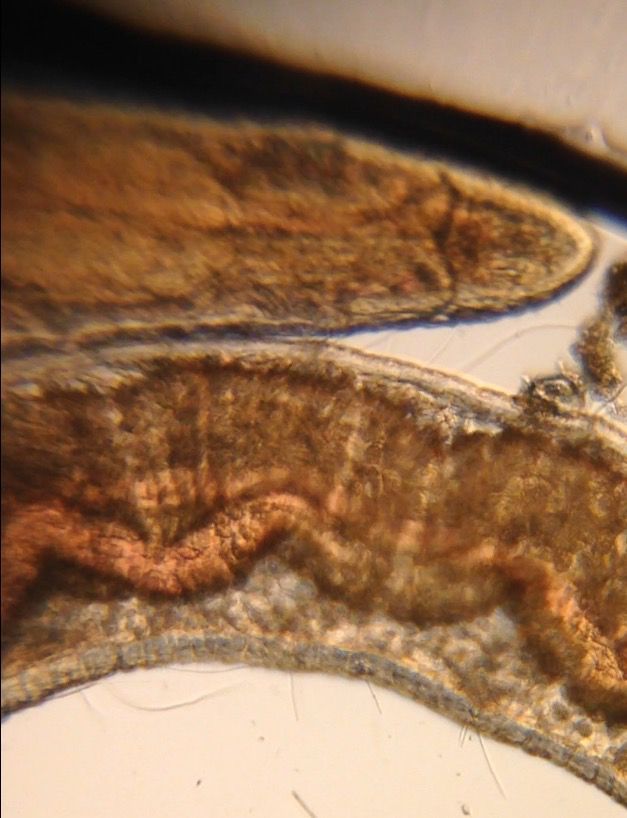
I love Lake Merritt in Oakland and its the reason over 10 years ago that I decided to stay is the decidedly urban environment. It also happens to be ground zero for the study of Marine Invasive species. A high school kid at the time by the name of James Carlton in 1962 was curious about the critters in the lake and started trying to identify them and a few of them did not seem to match anything from local guides, through lots of leg work he found that many of them were from places from across the pacific. Up until Carlton many people didn’t believe you could have invasive in the marine environment because the oceans are connected and anything could get anywhere. Jim was a big player in the field of marine invasives and a quick look at Lake Merritt and you’ll see quite the Anthropocene ecosystem with critters from Australia, Japan, the Mediterranean and elsewhere. It is suspected that most of these invasives find their way in on ballast water from boats entering the Oakland shipping port. If you are interested in who lives in Lake Merritt and a short history, here is a slide deck I made for an Audubon class I taught last year with lots of macro photography of the invasives and the natives: https://drive.google.com/file/d/0BzTWRWC5YiXsRjdMaGN1NzNKdlk/view?usp=sharing
With Foldscope I can now begin investigating more of the small organisms that are in the Lake, many most likely from afar. Polychaetes are a fascinating branch of life due to their many feeding strategies and sometimes colorful patterns. Below is a very small polychaete (marine segmented worm) that I picked up in scoop of sediment from the edge of Lake Merritt.
With Foldscope I can now begin investigating more of the small organisms that are in the Lake, many most likely from afar. Polychaetes are a fascinating branch of life due to their many feeding strategies and sometimes colorful patterns. Below is a very small polychaete (marine segmented worm) that I picked up in scoop of sediment from the edge of Lake Merritt.
Questions generated by the observation: Is that contraction motion for movement or for digestion or for both? What does this polychaete eat? Native or invasive? The last question may never get answered without some DNA work. Here is the observation on iNaturalist: http://www.inaturalist.org/observations/3126098
How to find Polychaetes: In Lake Merritt they like to hang out in edges or where there are a lot of other organisms. I tend to find them on the interface of rocks with sediment and then tons of them love to live all over mussel clumps. Many Polychaeta like to live in tunnels that they build of mud or of harder substrates.
How this video was imaged: I placed the polychaete in a drop of water from its environment on a glass slide and gently placed a glass coverslip over that and slid it into the Foldscope with the low magnification lens and my iphone5 cell phone attached using the magnet system of the Foldscope. I then held the Foldscope at an angle to a desk lamp and moved around until I got a really sharp contrast and then quickly hit record! Here is a image of the polychaete under the slide with a little clip on macro lens on my phone.
How to find Polychaetes: In Lake Merritt they like to hang out in edges or where there are a lot of other organisms. I tend to find them on the interface of rocks with sediment and then tons of them love to live all over mussel clumps. Many Polychaeta like to live in tunnels that they build of mud or of harder substrates.
How this video was imaged: I placed the polychaete in a drop of water from its environment on a glass slide and gently placed a glass coverslip over that and slid it into the Foldscope with the low magnification lens and my iphone5 cell phone attached using the magnet system of the Foldscope. I then held the Foldscope at an angle to a desk lamp and moved around until I got a really sharp contrast and then quickly hit record! Here is a image of the polychaete under the slide with a little clip on macro lens on my phone.

Sign in to commentNobody has commented yet... Share your thoughts with the author and start the discussion!
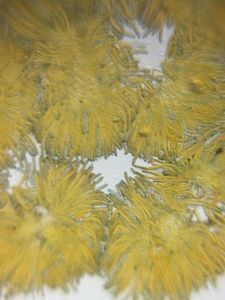
 0 Applause
0 Applause 0 Comments
0 Comments